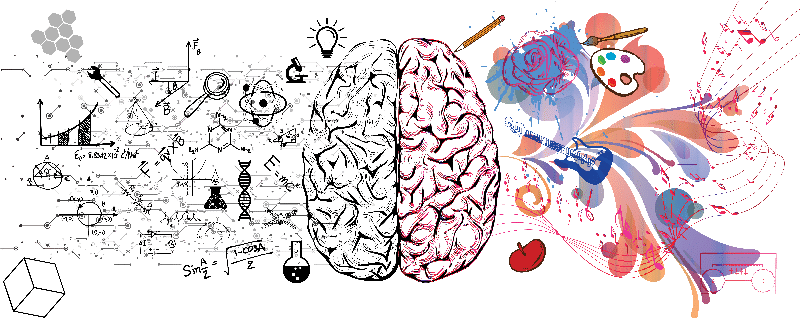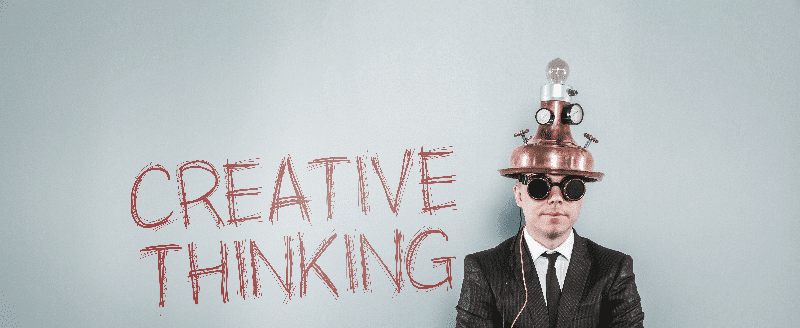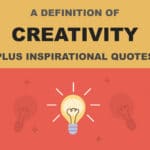In this rapidly changing and increasingly complex world, leaders face many challenges with higher levels of uncertainty than ever before.
[cmtoc_table_of_contents]
Organisations of all sizes are now competing with competitors from across the globe. Furthermore, with the rapid pace of technological change may industries are facing disruption from fledgling companies.
As a result, creativity has become a major priority for most organizations to survive. Why, well creativity and innovation drive progress and allow organizations to maintain a competitive advantage.
“Creativity, as has been said, consists largely of rearranging what we know in order to find out what we do not know. Hence, to think creatively, we must be able to look afresh at what we normally take for granted.”
George Knelle
Change brings together the need for creativity and leadership to tackle complex problems. The ability to think creatively is also a critical skill that will increasingly be needed across the organisation.
Both the World Economic Forum and The Institute of The Future list creativity as a required skill for future jobs.

Creativity vs. Innovation

There are lots of different definitions and concepts involved in both creativity and innovation. However, there are some critical points to make. Innovation doesn’t happen without creativity but ideas alone do not create innovations.
In a review of creativity and innovation, Anderson produced the following quote:
Creativity and innovation at work are the process, outcomes, and products of attempts to develop and introduce new and improved ways of doing things. The creativity stage of this process refers to idea generation, and innovation to the subsequent stage of implementing ideas toward better procedures, practices, or products. Creativity and innovation […] will invariably result in identifiable benefits.
Anderson (2014)
It neatly acknowledges the importance of the relationship between the two.
But what about leaders – can they be creative, can they develop the necessary skills to be creative leaders?
Creativity then is the cognitive and behavioural processes to generate novel ideas. Whereas innovation is the process applied to implement new ideas
Specifically, innovation involves problem/opportunity identification, the introduction, adoption or modification of new ideas to generate
value, promotion of ideas, and then generating the resources and implementing the ideas.
Creative people are confident that their insights are more likely to be effective in resolving certain situations because of their willingness to challenge the status quo.
But what is creative leadership?
A few definitions point the way to understand the characteristics of creative leadership.
Creative leadership has been defined as:
The ability to deliberately engage one’s imagination to define and guide a group toward a novel goal – a direction that is new for the group.
Puccio et al. (2011)
Leading people through a common process or method of finding and defining problems, solving them, and implementing the new solutions.
Basadur (2004)
Creative Leadership Skills

Leaders are always faced with complex and dynamic problems in organisational settings. These range from dealing with managing people through to decisions on strategy, markets, resources, technological change and environmental change.
Essentially these challenges blend into complex systems of change.
To solve these problems, creative problem-solving skills are needed that identify the key problems, generate creative ideas, evaluate them and construct an implementation plan.
Divergent thinking skills.

The idea of divergent and convergent thinking was born out of a model developed by Guilford in 1963 called the Structure of Intellect (SOI). From this model, the concept of divergent and convergent thinking was developed which have since become popular within Design Thinking.
There are four important elements to divergent thinking:
- fluency (the ability to produce a number of ideas)
- originality (the ability to produce unique ideas)
- flexibility (the ability to produce a variety of ideas across different categories)
- elaboration (the ability to extend /produce variations of an idea within a category)
Research has repeatedly demonstrated a link between divergent thinking skills and leadership performance. Therefore, divergent thinking skills are important for leaders to cultivate.
Convergent Thinking Skills

Convergent thinking is about evaluating ideas, refining options and prioritising them.
Typically for leaders, this involves interpreting the environment, evaluating the credibility of information, forecasts and plans.
Despite popular belief, generative and evaluative thinking are not as distinct as people think.
Most of the research on creativity has focused on the idea generation stage. The evaluation stage has only recently been investigated to any great depth.
The key skills required are as follows:
- Modelling – the ability to produce effective evaluation criteria.
- Staging – the ability to separate into two stages the evaluation and selection.
- Selection – the ability to use data and judgement (knowledge and experience) on selecting the most effective ideas.
What Skills Are Needed For Creative Leadership?
Leaders are not just creative in themselves. The concept of creative leadership is that creative leaders inspire and foster creativity, problem-solving and innovation in their followers – their teams and the broader organisation.
These are the main areas upon which a leader can develop their creativity and ultimately the broader capability with their organisation.
The Core Creativity Skills of Creative Leaders

- Knowledge
- Disposition
- Emotional Intelligence
- Openness
- Tolerance of ambiguity
- Creative habits
#1. Knowledge
Leaders sometimes need detailed information that can help them deal with specific situations.
A creative leader needs to have knowledge associated with forecasting and planning and crisis management.
Expert leaders who had more experience and knowledge within a specific domain have proved to be more action-oriented in innovative tasks. They recognize problems and come up with better solutions in creative tasks.
However, knowledge that isn’t renewed and relies on old mental models has a dramatically different result. In other words leaders who do not learn and take onboard new knowledge can quickly end up being stuck in the past.
Leaders experience in these instances can hinder creativity and innovation. Their internal filters negate possibilities and rely heavily on previous successes which may be outdated and no longer relevant to markets and the broader environment.
#2. Disposition
Theories of creativity march on two legs, which are usually treated separately by theorists.
Eysenck (1997)
One view creativity focuses on the creative process e.g. divergent thinking and problem-solving; the other focuses on the individual.
Many people, including some psychologists, believe creativity is a unique trait that differentiates some leaders from others.
However, ‘trait’ is not the best way of understanding creative leadership.
Instead, ‘disposition’ is more appropriate because it emphasizes the characteristic of how leaders make sense of new ways of thinking, feeling and behaving.
There are three lines of research that support creative disposition:
- emotional intelligence
- openness to experience
- tolerance of ambiguity.
#3. Emotional Intelligence
If you have a high level of Emotional intelligence (EI) then you are able to control and understand your and other peoples emotions. Also, you can use emotions to help in decision making.
Although EI is considered a type of intelligence or ability, EI can also be regarded as an emotional disposition.
Research has shown that leaders emotional intelligence critically affects leadership performance. In other words, a leader who lacks EI is unable to build working relationships.
However, Emotional intelligence has a positive effect on creativity as well. Individuals with a positive mood and good feelings are more creative.
Leaders with higher emotional intelligence foster higher levels of creativity in the workplace, a result that has been supported by several studies.
#4. Openness
Creative leaders are open to new experiences, demonstrate intellectual curiosity, are aesthetic sensitive and tend to have liberal values.
Not all leadership activities involve creativity. However, research has shown a strong relationship between openness and creativity particularly in situations that require innovative solutions.
#5. Tolerance for Ambiguity
Leaders who have tolerance for ambiguity tend to have a higher capacity to embrace uncertainty, complexity and be more adaptive and more flexible in dealing with real-world problems.
Furthermore, tolerance for ambiguity is strongly related to creativity. And, a higher tolerance for ambiguity is related to coping with stress in leadership roles.
#6. Creative habits
The brain is often able to solve a problem by way of pulling together disparate and seemingly unrelated ideas helps us be creative.
Creativity can be nurtured internally and within an organisation. It requires time and focus. Here are a few ways to foster it as a creative leader:
- Attention shifting– i.e. to focus on something different for 15% of their time.
- Horizontal sharing – breakthroughs often arise out of cross-fertilization of ideas. Regularly talk to others who are unrelated to the problems you are facing. Outsiders add new insights into problems.
- Change of scene – new environments are known to stimulate creativity. Changing routines and being in new environments can help creativity. Sometimes this can be as simple as taking a different route when walking.
- Take a break – When we are physically near the source of the problem, our thoughts are automatically constricted, bound by a more limited set of associations.
- Brainstorm – practice coming up with new ideas. Remove all phones, screens and just sit down with a piece of paper and no internet. Like working out to get physically fit, our brain needs creative workouts.
- Experiment – you have to have the courage to sometimes experiment.
- Letting go of perfection – as with entrepreneurship the doing is often the important point. Waiting for everything to be right, stacking all the data inhibits creativity.
- Spontaneity – this relates to breaking routines and letting go sometimes. This is also highly effective in motivating teams to be creative.
If you have any thoughts on creative leadership then drop them in the comments section,


